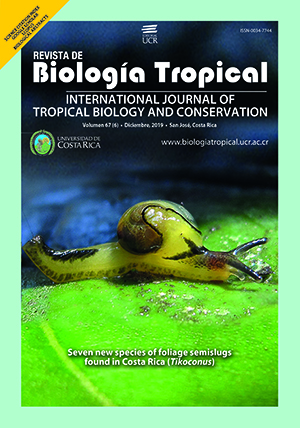Abstract
Tree plantations used for carbon sequestration or forest restoration often support diverse plant communities. However, it is unknown how rates of successional change in tree plantations compare to secondary forests. In this study, we compared the successional trajectory of tree plantations to that of secondary forests that were between 8 and 23 years old. Censuses of woody plants (≥2 cm dbh) in seven tree plantation plots and seven secondary forest plots (30 x 30 m) were conducted over three years (May 2013 – July 2016) in a lowland tropical forest. Secondary forests were naturally regenerating from abandoned cattle pastures. Tree plantations were monocultures of two different native species (Vochysia guatemalensis and Hieronyma alchorneoides) planted for carbon sequestration. We measured the change in stem density, basal area, species density, rarefied species richness, and relative abundance of different functional groups. We found that differences between these two forests types in stem density and basal area were declining. We did not find evidence for differences between forest types in the rate of accumulation of species richness when accounting for sample size. Although, the successional trajectory in tree plantations was very similar to secondary forests, there were differences between forest types in species composition. The rate of change in relative abundance of different functional groups was similar in both forest types. Overall, our results suggest that structural but not compositional differences between tree plantations and secondary forests are converging during the second decade of succession.
##plugins.facebook.comentarios##

This work is licensed under a Creative Commons Attribution 4.0 International License.
Copyright (c) 2019 J. Benjamin Longworth, G. Bruce Williamson







